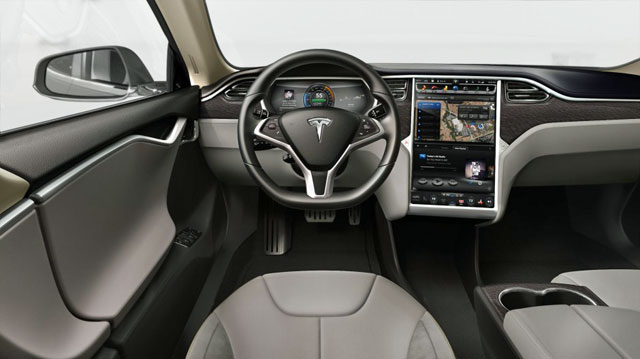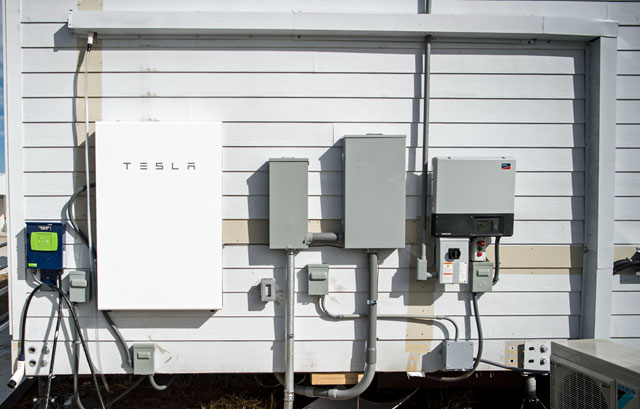Tesla goal is to accelerate the world’s transition to sustainable energy from fossil fuel. With this goal in mind, Tesla has two main product segments to do just that and they are:
- 1. Electric Vehicles
- 2. Energy generation and storage
Electric Vehicles

For electric vehicles, Tesla designs, develops and sells high-performance fully electric vehicles. These vehicles are designed from the ground up and are very different from those that use combustion engines.
Tesla currently produces and sells three electric vehicles:
- 1. Model S sedan
- 2. Model X sport utility vehicle (SUV)
- 3. Model 3 sedan
Model S deliveries to customers started in June 2012 while Model X started in September 2015. The most recent one was the Model 3, which started deliveries in July 2017. Model 3 is a lower priced sedan designed for the mass market.
Other than the above mentioned electric vehicles, the company also intend to bring additional vehicles to market in the future, which include fully electric trucks and sports car.
Since Tesla designs and manufactures its own vehicles, the company has amassed a substantial number of intellectual properties in electric vehicle designs. These expertise is giving Tesla a huge advantage over its competitors. As a result, these are the competitive advantages that Tesla is having over other automakers:
Tesla electric vehicles are having longer range and more flexible in charging
Tesla vehicles offer ranges that significantly exceed those of any other commercially available electric vehicles. For example, the Model 3 can go as far as 310 miles in a single charge while the Model S can offer up to 335 miles in a single charge.
Besides, Tesla vehicles are flexible when it comes to charging its battery because of the proprietary on-board charging system which allows recharging from almost any available electrical outlet and fast charging from its own Supercharger network.
Tesla vehicles are high performance without compromising design and safety
Its electric vehicles deliver instantaneous and sustained acceleration. The Model S can go from 0-60mph in just 2.5 seconds while the Model 3 can go from 0-60mph in 3.3 seconds.
In addition, most vehicle variants come with advance autopilot system with active safety and convenience features as well as over-the-air software update.
Tesla vehicles are energy efficient and offer lower cost of ownership
Compared to internal combustion engine and hybrid electric vehicles, Tesla vehicles are cheaper in the long run. The reason is the advance electric powertrain that allows the design of energy efficient vehicles which are mechanically simpler and having fewer moving parts.
As a result, vehicles owners are not only saving fuel but also maintenance cost due to the absence of certain components such as oil, oil filters, spark plugs and engine valves.
Long distance travel and convenient charging options for vehicles owners
Tesla has built up an extensive network of Supercharger stations around the world. As of 3Q18, there are over 1300+ Supercharger stations worldwide. These Supercharger stations are industrial grade, high speed charger designed to recharger Tesla vehicles significantly more quickly than other charging options.
These stations are strategically placed in well-travelled routes and populated city center to allow long distance travel. These strategic Supercharger networks is designed with the purpose of removing the barrier to the broader adoption of electric vehicles caused by the perception of limited electric vehicle range.
Energy generation and storage

The energy product segments can be divided into two groups: energy generation and energy storage.
Energy Generation
Energy generation is made up of solar systems which converts solar energy to electric energy. These solar systems consist of several components such as the solar panels, inverter, mounting racks, battery pack and power meter which work together to make possible the energy conversion from solar to electricity.
Tesla installs these solar systems and sell or lease them to residential and commercial customers. In return, these customers get paid from the utility companies for the electricity generated from their solar system.
In addition, Tesla also builds its own solar system and sell the electricity generated from its own solar system through power purchase agreements to residential and commercial customers at prices that are typically below utility rates.
Throughout the years, Tesla has amassed a substantial number of high quality receivables from these long-term leases and power purchase agreements with its customers that generate recurring income for the company.
Energy Storage
Tesla is leveraging its technological expertise in batteries, power electronics and integrated system in electric vehicle design and manufacturing to create and sell energy storage products. Currently Tesla has two main energy storage products, they are:
- 1. Powerwall 2
- 2. Powerpack 2
Powerwall 2 is a 14 kilowatt hour (kWh) home battery with an integrated inverter that is specifically design for residential usage. The Powerwall 2 is a scalable energy storage system where customers can combine one or more Powerwall 2 to increase the storage capacity.
Similarly, Powerpack 2 is also an infinitely scalable energy storage system but this product is specifically for commercial, industrial and utility application. A single Powerpack 2 storage is made up of 210 kWh battery packs and 50 kVa inverters.
Disclosure:The authors wrote this article themselves, and it expresses their own opinions. The authors are not receiving compensation for writing the article. The authors have no business relationship with any company whose stocks are mentioned in this article.
References:
1. All information in this article was obtained from Tesla SEC Filings.
2. Featured image was obtained from National Renewable Energy Lab, Christopher Dorobek and Mark Dixon.